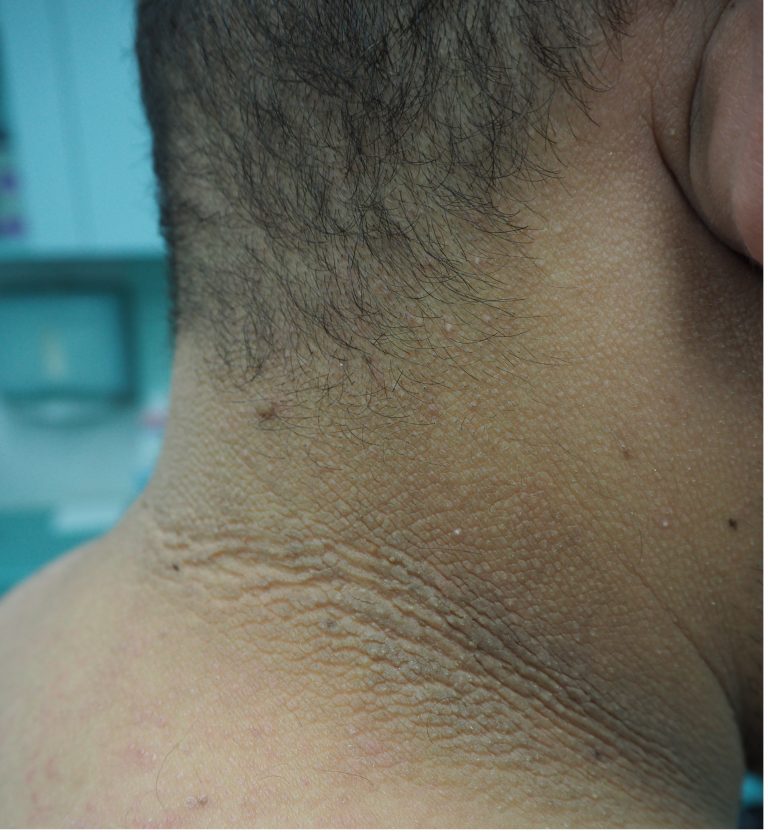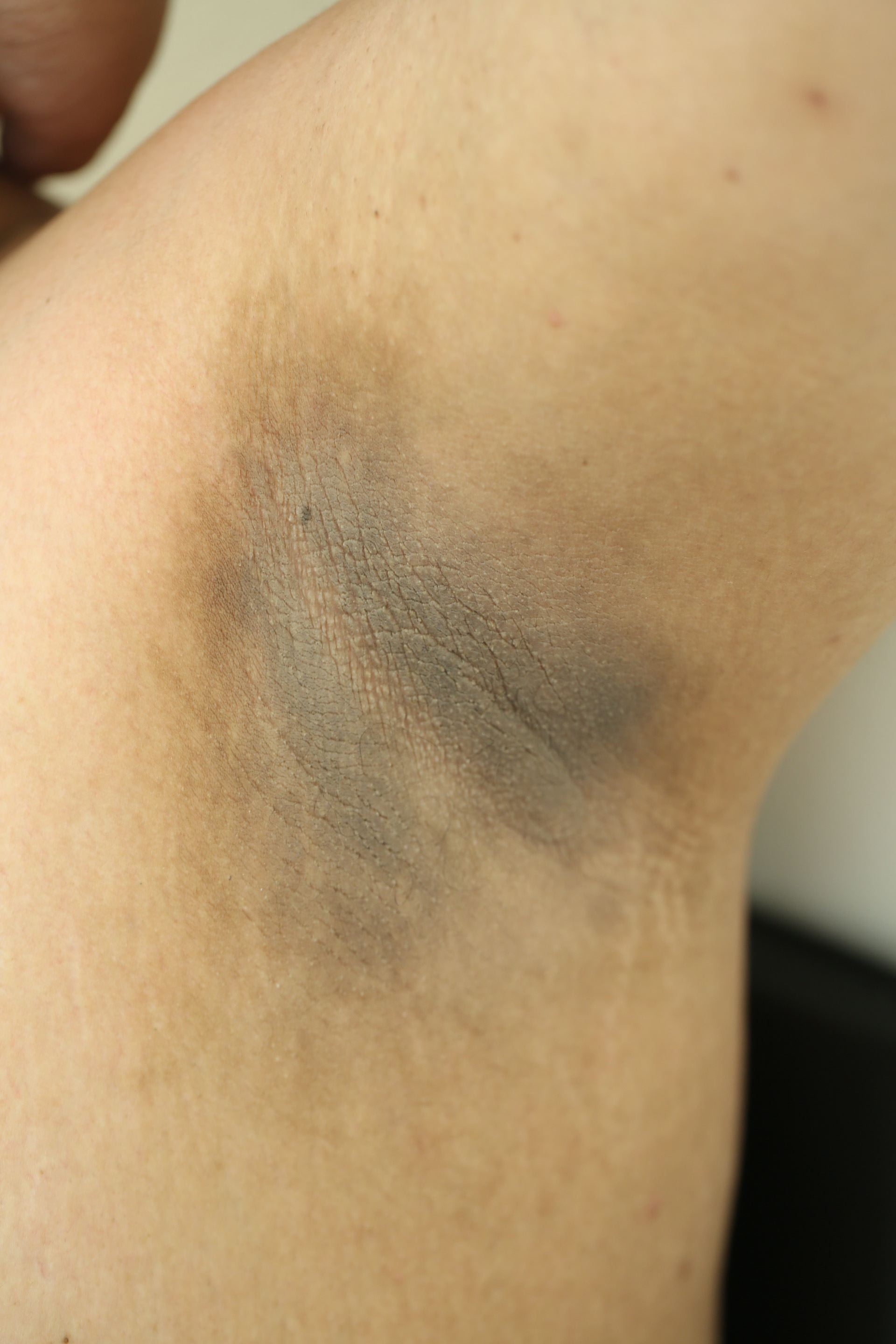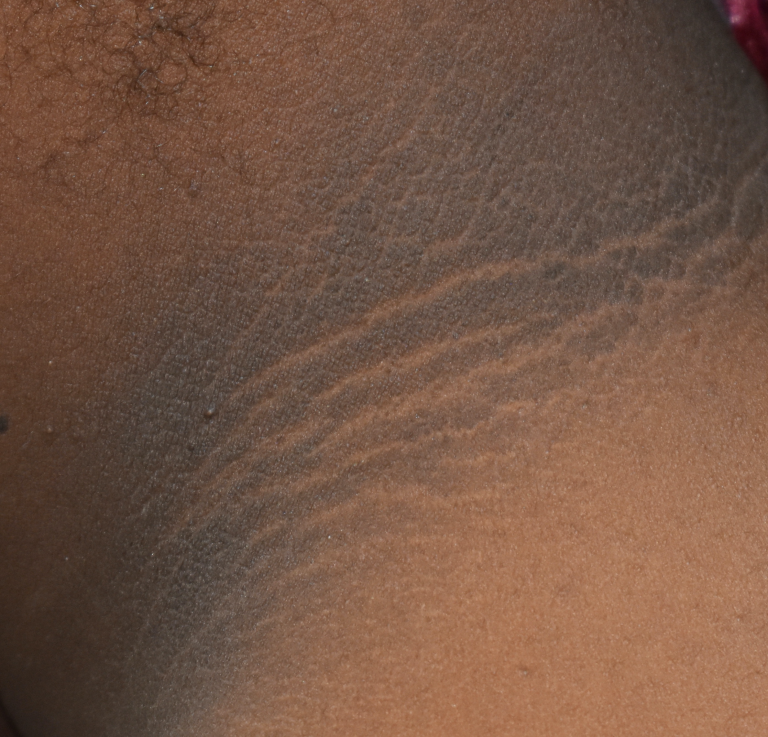Last updated: July 2023
What is acanthosis nigricans?
Acanthosis nigricans is a skin condition in which the skin becomes thickened and has a dark velvety appearance. It is most commonly in the armpits, around the neck, the groin and under the breasts.
The skin changes of acanthosis nigricans rarely causes complications. However, scratching, or excessive scrubbing of the area can cause breaks in the skin and infection.
Who gets acanthosis nigricans?
Acanthosis nigricans is most frequently seen in overweight individuals and is believed to be related to insulin resistance. A United States study reported acanthosis nigricans in 74% of individuals with obesity. 1 It may also develop in overweight adolescents and children.
This condition can also more severely affect those with skin of colour.
Acanthosis nigricans can be associated with endocrine or metabolic disorders, such as diabetes mellitus, metabolic syndrome, Cushing’s syndrome, polycystic ovarian syndrome and thyroid disease.
What causes acanthosis nigricans?
The cause of acanthosis nigricans remains unclear, but is predominantly linked to insulin resistance, where obesity, diabetes or metabolic disorders co-exist.
Medications may cause acanthosis nigricans as a side effect, such as glucocorticoids, insulin, oral contraceptives, testosterone and aripiprazole. There are also some rare inherited causes of acanthosis nigricans, which present in early childhood and may be accompanied by other abnormalities in growth and other organs.
In very rare cases, sudden onset and widespread acanthosis nigricans involving hands and feet (particularly in a individual who is unwell and has lost weight) may herald cancer. The cancers are most frequently in the gastrointestinal tract.
What does acanthosis nigricans look like?
Acanthosis nigricans typically appears as symmetrical, thickened, grey-brown and raised velvety areas of skin. Most commonly the lesions appear on the back and sides of the neck, underarms, and groin, but can affect other skin fold areas such as the knuckles of the hand, soles of the feet, knees and elbows. The thickened skin is not itchy or sore.
Skin tags are common and may develop in or around the affected areas. In some cases, skin tags may appear on mucosal surfaces, such as the mouth.

Figure 1. Acanthosis nigricans on the neck. Image reproduced with permission of A/Prof Deshan Sebaratnam.

Figure 2. Acanthosis nigricans on the armpit. Image reproduced with permission of A/Prof Deshan Sebaratnam.

Figure 3. Acanthosis nigricans on the neck. Image reproduced with permission of A/Prof Deshan Sebaratnam.
How is acanthosis nigricans diagnosed?
Acanthosis nigricans is diagnosed clinically through history and examination of the skin.
A skin sample (biopsy) may be taken when the diagnosis is uncertain. As acanthosis nigricans is usually a sign of an underlying disease, other tests may be performed looking for diseases, such as diabetes or insulin resistance.
How is acanthosis nigricans treated?
Treatment options will vary depending on the individual and their needs.
The main treatment of acanthosis nigricans is to manage the underlying disease. Weight loss in individuals with obesity can result in significant improvement of lesions or complete resolution.
Other treatments may include:
- topical retinoids or Vitamin D analogues
- lasers have been used to thin the thickened area in a small number of cases.
Individuals with acanthosis nigricans may sometimes mistakenly believe that their skin is dirty or that they need to excessively scrub the affected areas. This should be avoided as it can cause further thickening and darkening of the skin.
What is the likely outcome of acanthosis nigricans?
The underlying disease needs to be identified and addressed as outcome of acanthosis nigricans will vary depending on the cause and severity.
Those with insulin resistance and obesity-related acanthosis nigricans are at risk of developing diabetes, and associated heart and kidney complications.
Inherited acanthosis nigricans may stabilise or completely clear on their own without the need for targeted treatment.
Individuals with malignant acanthosis nigricans generally have a short average survival time.
- Hud JA Jr, Cohen JB, Wagner JM, Cruz PD Jr. Prevalence and significance of acanthosis nigricans in an adult obese population. Arch Dermatol. 1992;128(7):941-944.
| Dr Yaron Gu, Dr Artiene Tatian and A/Prof Deshan Sebaratnam | July 2023 |
| Dr Artiene Tatian and A/Prof Deshan Sebaratnam | April 2018 |
Disclaimer
2019 © Australasian College of Dermatologists.
You may use for personal use only. Please refer to our disclaimer.